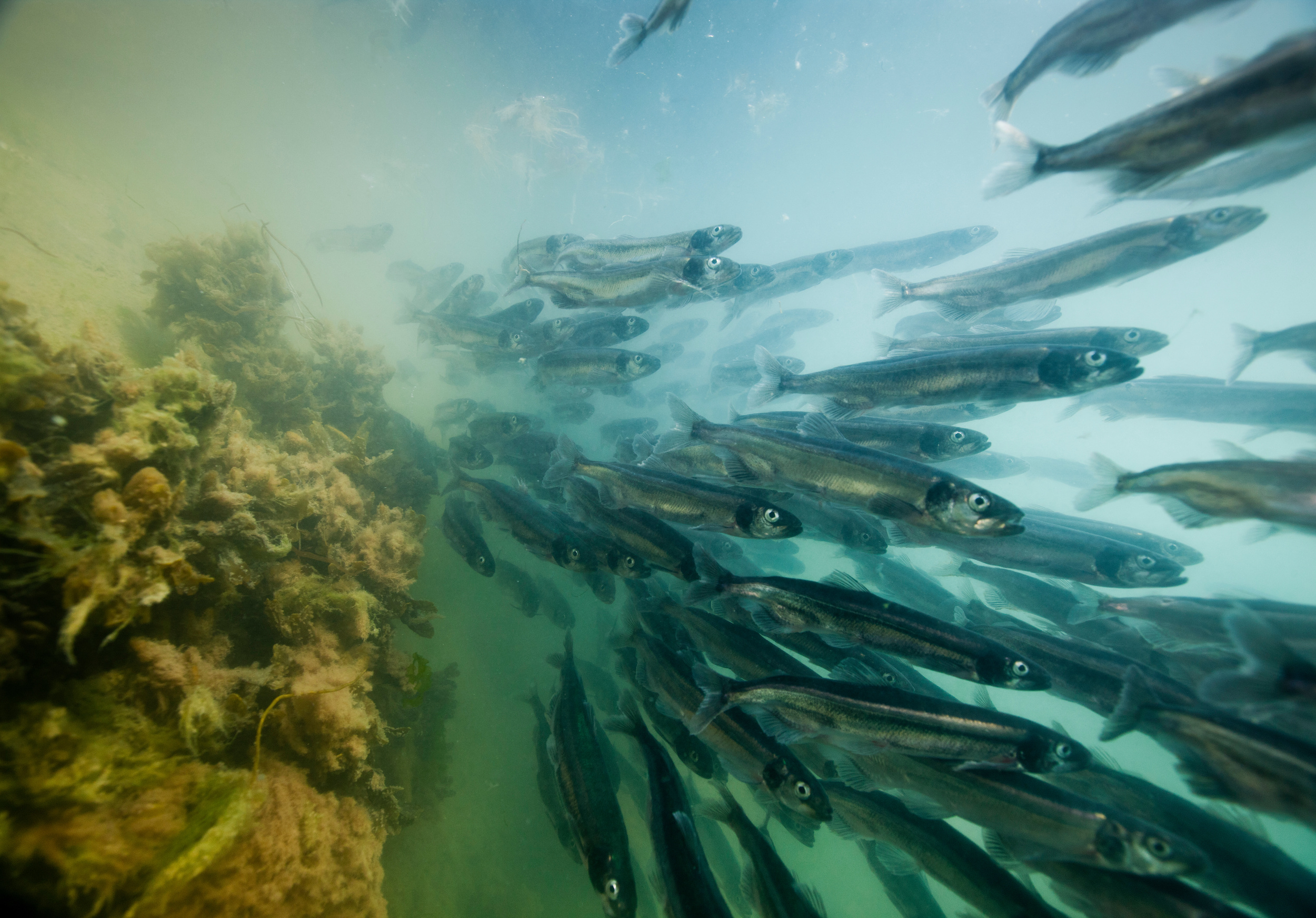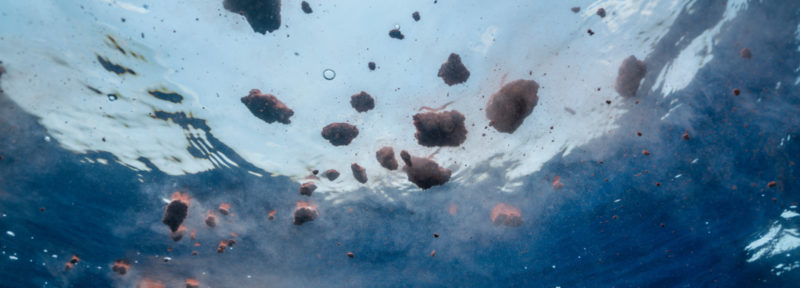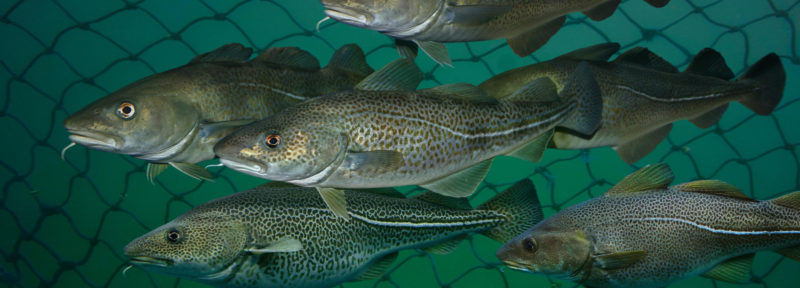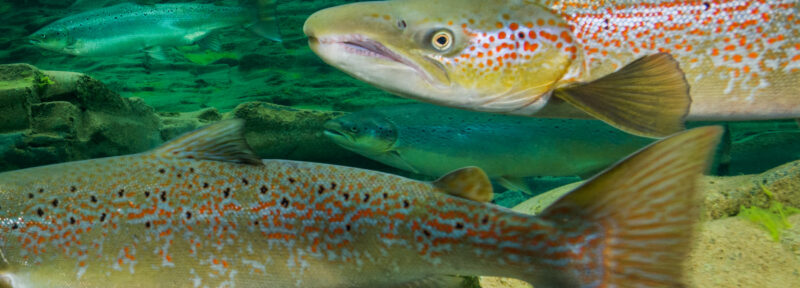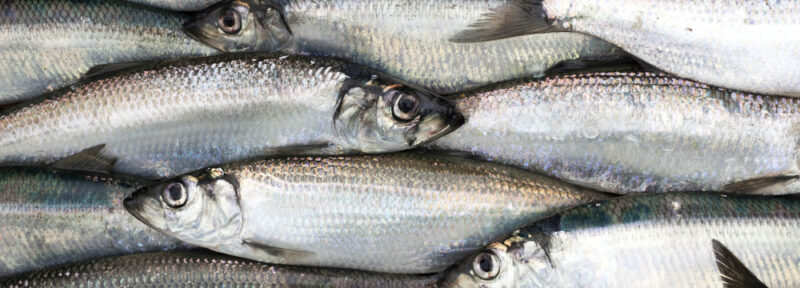Rolling into a New Era of Capelin Science
Capelin spawning off the coast of Greenland.
Thousands of locals and tourists visit the beaches in Newfoundland’s East Coast each June to witness one of nature’s most intriguing spawning events: the capelin roll. These small, silvery fish come to the beaches to spawn and “roll” ashore with the incoming waves. Their arrival brings both curious onlookers and fishers looking to catch an early summer supper—as well as whales and seabirds, who are also hoping for a tasty meal.
Capelin are a keystone forage fish species in Newfoundland and Labrador waters. They are important prey to numerous commercial fish species such as cod, Greenland halibut, American plaice, redfish, as well as marine mammals and seabirds. However, like other forage fish species in Atlantic Canada, their population has been in decline for decades. To rebuild the capelin stock back to a healthy level, we need to understand what’s going on with the whole ecosystem. Luckily, a new ecosystem-based approach to fisheries management is offering hope for this struggling stock—and for another that depends on it.
Capelin are traditionally harvested on rocky beaches when they come in from the offshore to spawn or “roll” and are used for food and bait. Today, a small inshore fishery is operated using traps, purse seines, and beach seines. There was once a large offshore fishery for capelin that began in the early 1970s, but it was closed during the 1990s when Newfoundland’s groundfish stocks collapsed—a consequence of poor management and overfishing that led to the biggest worker lay-off in Canadian history. Since then, the capelin and groundfish stocks have seen little to no rebuilding and remain in the critical zone.
One of the basics of fisheries management in Canada is to establish a limit reference point (LRP) for fish stocks. If the stock status goes below this point, it means serious harm is occurring. Previously, these LRPs have not considered ecosystem dynamics. However, science and history have offered us a clue for how we can now better manage our fisheries in the future. Work done by Fisheries and Oceans Canada’s Koen-Alonso et al. (2021) found that cod populations in the Barents Sea, off the coasts of Norway and Russia, are highly dependent on capelin availability. A similar model can be applied to the Northern cod stock in Newfoundland and Labrador.
Given the strong relationship between capelin and cod, DFO has, for the first time in Atlantic Canadian history, successfully implemented an ecosystem-based approach to fisheries management through the establishment of a new capelin LRP. By looking at cod biomass levels, we can determine how many capelin are needed in the ecosystem to allow the cod stock to stabilize at its own LRP. This is important because we’ve long known the importance of considering the ecosystem when managing fish stocks, but still DFO has tended toward the traditional approach of considering only the target stocks.
The most recent assessment of the Newfoundland and Labrador capelin stock confirmed that it’s still below the LRP, which is causing impacts to the ecosystem and associated species as well as a long-term loss of fishing opportunities. Reducing fishing mortality and increasing our knowledge of how environmental conditions may influence stock biomass are essential to ensure the future of the fishery. But by considering the broader ecosystem, managers have taken an important step towards understanding and addressing the problem.
The history of Canadian fisheries management has repeatedly shown what can happen when management actions are based on short-term decision making rather than precautionary long-term rebuilding of other commercial fish stocks. We hope that this new ecosystem-based method for establishing reference points helps to roll in a new era of fisheries management in Canada, especially for species as important as capelin.
Gemma Rayner is Fisheries and Special Projects Advisor at Oceans North.

